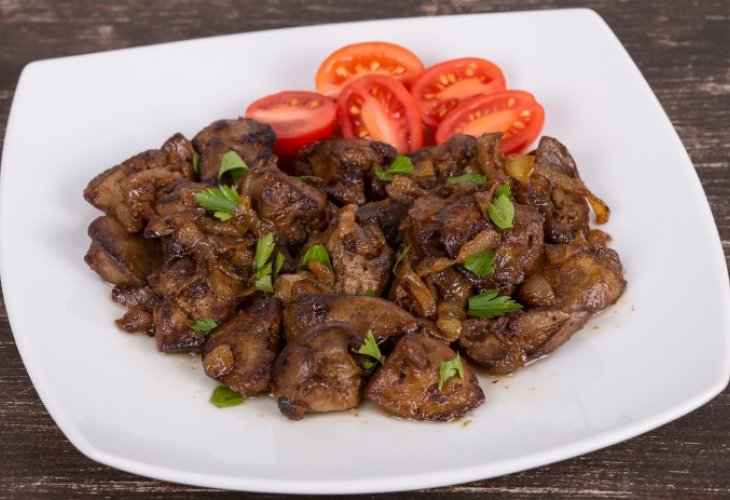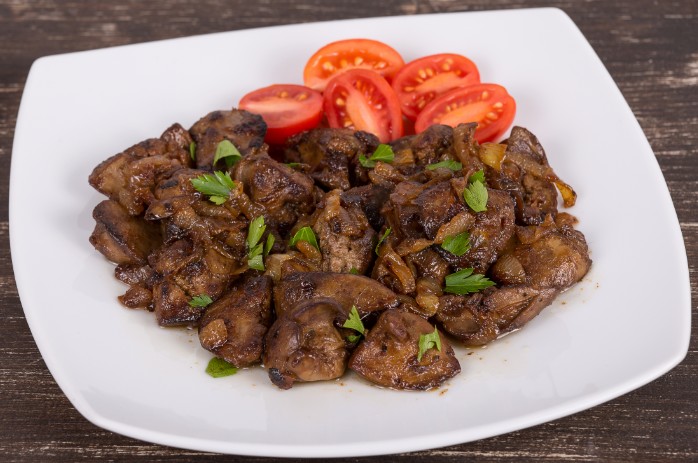Liver Kashrut: Everything You Wanted to Know
Understanding the complexities of kosher liver preparation and consumption according to Jewish law

It's very difficult to cover the entire Talmudic discussion and all the opinions of early and later authorities in a single article. If we try to summarize, we'll find that there are three main opinions on how to kasher roasted liver for consumption. One opinion claims that liver doesn't need any preparation at all—it's sufficient to roast it as is, even when it's whole. Conversely, there's an opinion that maintains that one shouldn't permit roasting liver, even if one intends to eat it roasted without cooking it afterward, unless it's cut along its entire length and width, with care taken that during roasting the cut faces downward to allow the blood within the "simponot" (blood vessels) to flow out of the liver. There's a middle opinion that holds that if one intends to roast the liver to eat it only roasted, it's sufficient to roast it without cutting, but if one intends to cook the liver after roasting, one must make the "shti v'erev" (crisscross) cut. By the way, a shti v'erev cut isn't just a small X marked on the liver, but rather cutting through the entire length and width.
However, how we should practice practically also requires clarification and in-depth study, whether we are Sephardim who follow the light of Maran, or Ashkenazim who follow the Rama, because when we open the Shulchan Aruch to see how to practice practically, there seems to be a contradiction between the statements. If we quote the Shulchan Aruch, it states: "The liver contains an abundance of blood. Therefore, initially, it cannot be rectified for cooking through salting, but rather one must tear it in a crisscross pattern and place the cut side downward, and roast it." These words teach us that all liver roasting requires a shti v'erev cut, regardless of what one intends to do with the liver, whether to eat it only roasted or to cook it afterward. However, in the two sections that follow, Maran writes, "For roasting, it requires cutting because of the blood in the vessels," which in the simple understanding sounds like if one wants to eat roasted liver, it's sufficient to cut it with a single cut, and one doesn't need to make two cuts, shti v'erev.

The same contradiction exists in the Rama's words, because after the Shulchan Aruch mentioned that one needs to cut the liver shti v'erev, the Rama added, "And if one pierces it many times with a knife, it's considered like a shti v'erev cut, and likewise if one removes the gall bladder and a piece of meat from the liver (poultry liver), because the blood can flow from there." The clear implication is also that one needs to cut the liver shti v'erev, except for the leniency that it's sufficient to puncture the liver with a knife. However, regarding Maran's statement that roasting requires cutting, the Rama wrote, "And there are those who say that for roasting, no cutting at all is required, and this is the practice even initially." Here the contradiction is very obvious—is cutting required or not?
The truth is that there are several explanations and interpretations, but the main opinion is that there is a clear distinction between kashering liver when one intends to eat it cooked after roasting, in which case according to the Shulchan Aruch, cutting along its length and width in a shti v'erev pattern is required, and according to the Rama, there is a discussion about whether piercing with a skewer or removing the gall bladder is sufficient. However, when one intends to eat the liver only roasted without cooking it afterward, from the strict letter of the law, there might be room to be lenient that cutting is not required, but they were stringent to make a cut.
But on this point, how to practically handle liver that is eaten only roasted, there is a fundamental difference between the custom of Sephardim and Ashkenazim, and in the instructions given to the kashrut organizations that depend on them, which we will explain.
There are authorities who ruled that in order to satisfy the opinion of the Shulchan Aruch when eating roasted liver without cooking it afterward, one must cut the liver, but a lengthwise cut alone is sufficient. However, the opinion of Maran Maor Yisrael (Rabbi Ovadia Yosef) zt"l was, as he instructed his son, the head of the Beit Din, the great Rabbi Moshe Yosef shlit"a, that even in this case one must make a shti v'erev cut, as understood from the Beit Yosef to be concerned with the opinion of the Bahag. However, Maran ruled to the members of the Beit Din that piercing with a skewer is considered as one cut, and therefore it is necessary to make an additional cut along the entire length of the skewer, and it's important to emphasize that each lobe of the liver requires cutting.
On the other hand, the ruling of Ashkenazim is that one doesn't need to cut the liver when it's eaten roasted, and those who are stringent are satisfied with cutting the gall bladder or piercing with a skewer, which is considered a cut—something that was contrary to Maran zt"l's opinion. So if we come to dine at a restaurant or hall, to consider whether this liver is to our taste...
From 'Oneg Shabbat', the Torah supplement of "Yom L'Yom".

